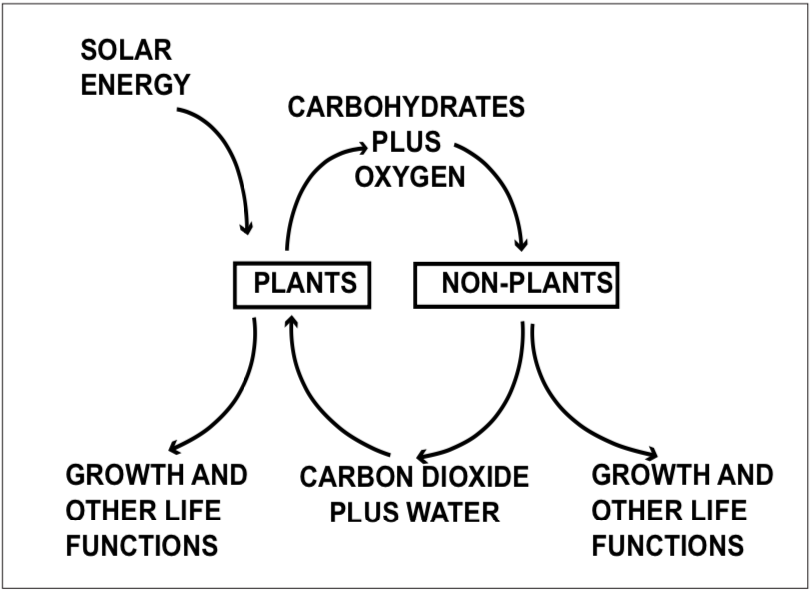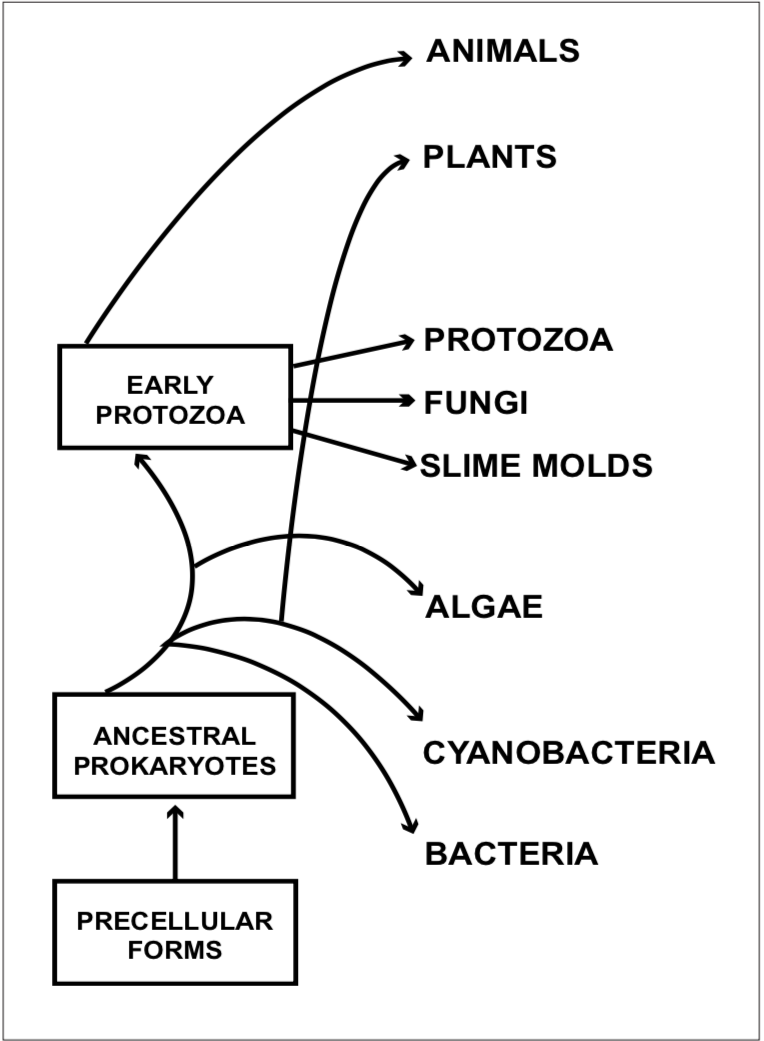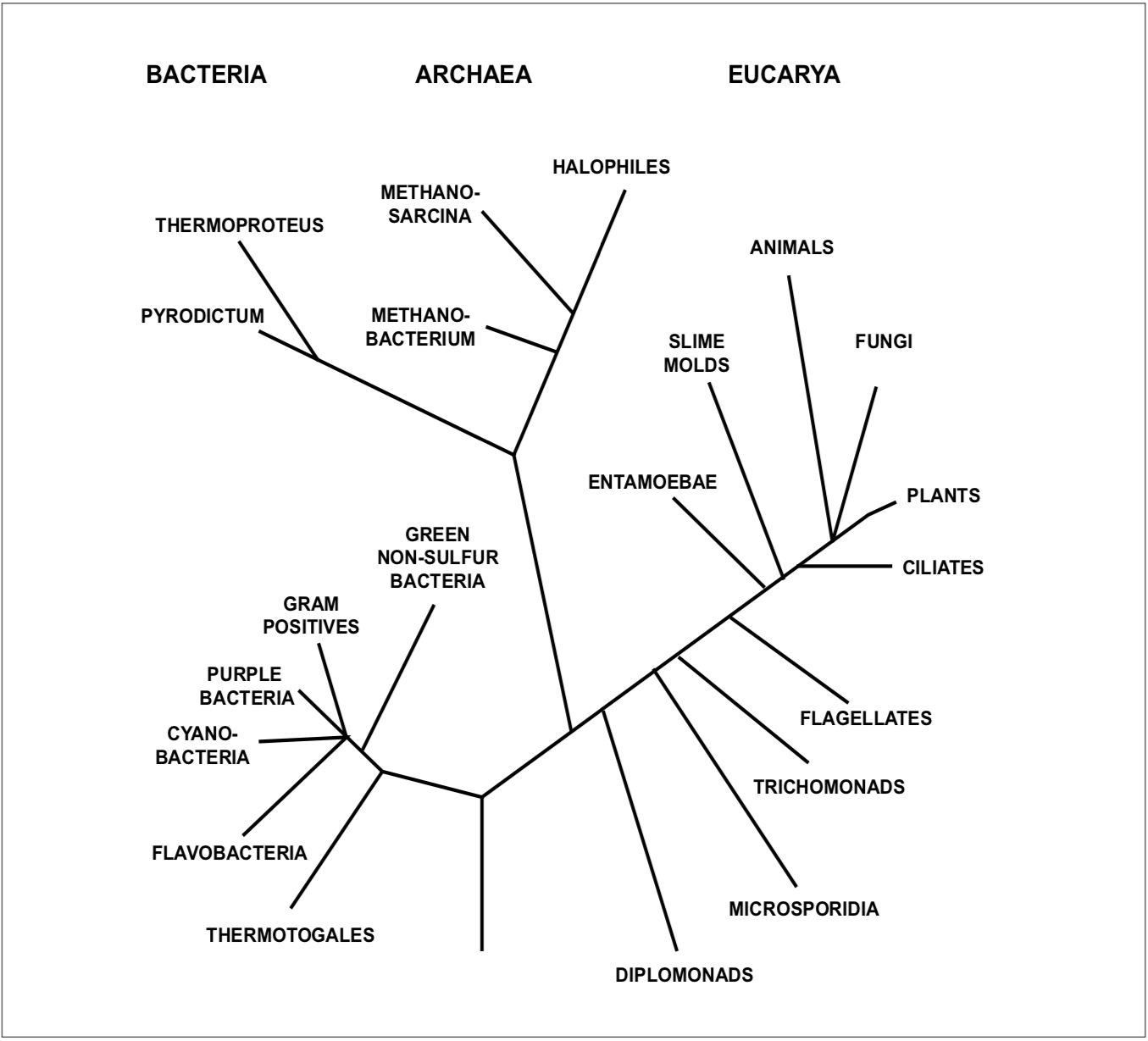©Copyright 2018 GEOSCIENCE RESEARCH INSTITUTE
11060 Campus Street • Loma Linda, California 92350 • 909-558-4548

CHAPTER ONE. IS THERE SUCH A THING AS LIFE?
by
George T. Javor
Loma Linda University
“Life is a spiritual pickle which keeps the body from decay”.
A. Bierce
It was Dr. Albert Szent-Gyorgyi, a Nobel prize-winning biochemist, who wrote: “Life, as such, does not exist”. [1] Most of us would quickly disagree with him, Nobel prize notwithstanding, because we know that life is all around us in the forms of people, animals, and plants.
We may not have noticed that he did not actually write “life does not exist”, but rather “life as such” does not exist. “What we can see and measure are material systems”, continued Dr. Szent Gyorgyi, “which have the wonderful quality of ‘being alive’”.1 That is, one cannot put “life” in a test tube. There is no freestanding entity called “life”. The Hungarian-born scientist did not deny the concept of life, only that it can exist autonomously, apart from material systems. [2], [3]
Living organisms blanket the Earth so extensively that a typical gram of soil will contain at least ten thousand microbes. Spores (inert forms of microorganisms) swarm in the air, and specimens of marine life have been seen in the deepest recesses of the oceans, several kilometers in the deep rocks, where hydrostatic pressures approach 1000 atmospheres.
Not only are living organisms everywhere, they come in an astonishing array of forms. It is estimated that the number of diverse species on our globe runs into the millions! [4] Their combined activities make Earth’s surface a throbbing web of constant change.
An important aspect of the biosphere is that diverse orders of organisms support the existence of each other. A prime example is the work of nitrogen-fixing bacteria, without which plants could not access the abundant nitrogen available in the air. Soil microorganisms and bacteria living in the roots of certain legumes in symbiotic relationship convert the nitrogen gas in air to water-soluble nitrates and nitrites. Plants then use these for their growth.
Plants also utilize carbon dioxide from the air to manufacture carbohydrates, harnessing solar energy. This process, photosynthesis, liberates oxygen. Non-plant organisms use oxygen in generating energy by burning up plant material and by releasing carbon dioxide as waste. This relationship between plants and non-plants is illustrated in Figure 1.1.

The mutual interdependence of organisms, as seen in the biosphere today, brings into question whether there ever was a time when only a single form of life existed. While evolutionists have always insisted that this indeed was the case, recently there is a reluctance to become specific about the nature of the putative precursor organism(s) of modern life forms. This happened partly because of the discovery that the chemical makeup of heat-tolerant microorganisms seems to be more similar to eukaryotes (cells with nuclei), than to other forms of bacteria. Thus the previously perceived, clearly defined, relative positions in the hierarchy of eukaryotes over bacteria became blurred.
An older pictorial representation of how different organisms were supposed to have evolved from each other is shown in Figure 1.2. All life forms were believed to have originated from ancient “prokaryotic cells”.

This evolutionary bias is seen in the commonly used term “prokaryote”, meaning “before kernel” in Greek, to designate any bacterium. (The term “kernel” represents the more commonly used word “nucleus”.) The latest evolutionary scheme, shown in Figure 1.3, features a phylogenetic tree, where the trunk and the branch-points are unidentified and it is no longer clear whether the putative evolutionary ancestor was with or without a true nucleus.

The great variety and abundance of living organisms on Earth is in stark contrast to the apparent sterility of our cosmic neighborhood. Based on several decades of probing, there is no hard evidence to suppose that any extraterrestrial life forms exist in the solar system. [7] Furthermore, in the past few years very intensive “listening” has been under way for intelligent extraterrestrial radio signals, [8] again, so far with no results. The apparent uniqueness makes the study of life all the more exciting.
GRAPPLING WITH THE DEFINITION OF LIFE
Entire fields of knowledge are connected with studies of living organisms, i.e., biology, microbiology, biochemistry and biophysics. Yet after two centuries of dedicated study we still do not have a very satisfactory definition of life. For example, one dictionary defines life as “the property or quality that distinguishes living organisms from dead organisms and inanimate matter, manifested in functions such as metabolism, growth, response to stimuli and reproduction”. [9] This definition accurately describes in a general way the most recognizable features of living organisms, but it does not illuminate the core concept of life. It leaves unspecified what “that property or quality” is, which enables matter to behave in such a unique manner that the term “life” is required to describe it.
Many forms of living matter exist as hierarchies of increasingly complex structures. Cells join to form tissues, tissues interact to fashion organs, and organs compose organisms. The term “life” has different technical meanings, depending on whether it refers to cells, organs or organisms. This concept may be seen when upon the unfortunate death of an accident victim, his or her organs (which are still “alive”) may be transplanted into another person. Under appropriate conditions the new organ will continue to “live” because its individual cells are alive and they interact with each other harmoniously to carry out the organ’s functions. It is the cells of the organs that are the smallest units of life. When they die, life disappears. Thus a good place to begin the study of life is the cell.
Deciphering the composition and workings of cells on the molecular level started in earnest at the beginning of the twentieth century when scientists reached a sophisticated understanding of organic chemistry. Knowledge of the operation of living cells continues to grow to this day at a dizzying pace. As of the middle of 1999 the complete genomic structures of twenty-three organisms are available. [10] With the help of computer analysis it has been possible to parse the chromosomes of these organisms into genes. Furthermore, utilizing the concept that genes with similar nucleotide sequences often code for proteins with similar functions, educated guesses are made about the roles of newly found genes. Within a few years we may have a complete understanding of the internal workings of some bacterial cells.
Beyond achieving an ever-clearer grasp of life-processes, scientists are now able to alter organisms by placing new genes into them. Optimism is rampant that soon we will understand the molecular secrets of cellular differentiation, the formation of diverse daughter cells from one parent cell. Currently a worldwide effort is underway, with the leadership of the United States, to determine the nucleotide sequence of the entire human genome, some 3 to 4 billion nucleotides long. Such knowledge, it is claimed, will enable us to find out how cancer develops and how its spread may be arrested. We may also gain a better understanding of a host of other diseases which are caused by aberrations in the genetic material. Doubtless, we live in the golden age of biology, and we may eagerly anticipate many existing discoveries in the near future! As comprehension of the unique properties of living matter reaches unprecedented heights, we are positioning ourselves to answer the age-old question, What is the origin of life on Earth?
SUMMARY OF CHAPTER 1
- Life is not a freestanding entity. The only experience we have with life is in association with certain types of matter.
- Organisms in Earth’s biosphere are mutually interdependent.
- It is becoming increasingly difficult to postulate the nature of the hypothetical evolutionary ancestor(s) of modern organisms in the light of the unexpected finding of similarities between certain thermophilic organisms and eukaryotes.
- The term “life” has different meanings, depending on whether it refers to organisms, organs or cells.
- A century of biological and biochemical research has propelled us into the golden age of biology.
REFERENCES AND NOTES ON CHAPTER 1
[1] Szent-Gyorgyi A. 1972. The living state with observations on cancer. NY and London: Academic Press, p 1.
[2] Ibid.
[3] This sort of analysis of life may seem too materialistic to many conscientious persons who perceive that the Bible teaches a different view of life — one which does not insist that it be associated with matter. It is true that scientists have experience only with life as it is found here on Earth, and that there may well exist larger realities which are not now accessible to us.
Nevertheless, the Bible supports the notion that life is associated with matter. In the second chapter of Genesis, for instance, where the creation of mankind is described, “...the Lord God formed man of the dust of the ground, and breathed into his nostrils the breath of life; and man became a living soul” (v 7). It was the combination of the breath of life and the dust of the ground which gave rise to the living person. Similarly, according to biblical teachings, a person dies when his “breath goeth forth, he returneth to his earth; in that very day his thoughts perish” (Psalm 146:4). The “return to earth” marks the end point of human existence. Even though his “breath goeth forth”, the person’s life does not. While one can only speculate on the meaning of the “breath of life” and of the person’s “breath”, it is clear that life did not continue, because the “thoughts perished”. The Bible does not know anything about a disembodied form of life. To embrace the material basis of life on Earth therefore does not make one a materialist.
[4] Starr C, Taggat R. 1992. Biology, the unity and diversity of life. Sixth ed. Belmont, CA: Wadsworth Publishers.
[5] Figure drawn after: Davis BD, Dulbecco R, Eisen HN, Ginsberg HS. 1980. Microbiology. Third ed. Hagerstown, MD: Harper and Row Publishers, p 11.
[6] Figure drawn after: White D. 1995. The physiology and biochemistry of prokaryotes. NY: Oxford University Press, p 4.
[7] The claims of Dr. D.S. Mackay et al. (Science 273 [1996], p 924) regarding meteorite Alh84001 — that it came from Mars and that it contains organic matter from that planet — cannot be considered evidence for extraterrestrial life. Their assertions are based on a one-sided interpretation of the actual data presented.
[8] SETI Institute News release on the Internet, February 12, 1998.
[9] The American Heritage Dictionary. 1991. Second college ed. Boston: Houghton Mifflin Co.
[10] As of June 1999, twenty-three complete genome sequences of organisms have been published. These are: Aeropyrnum pernix K1, Archeoglobus fulgidus, Aquifex aeolicus, Borrelia burgdorferi, Bacillus subtilis, Caenorhabditis elegans, Chlamydia pneumoniae, Chlamydia trachomatis, Escherichia coli, Haemophilus influenzae, Helicobacter pylori, Methanobacterium thermoautotrophicum, Methanococcus jannaschii, Mycobacterium tuberculosis, Mycoplasma pneumoniae, Mycoplasma genitalium, Plasmodium falciparum, Pyrococcus horikoshii, Rickettsia prowazekii, Sacharomyces cerevisiae, Synecocystis PCC6803, Thermotoga maritima, Treponema pallidum. Also available are the complete genome sequences of at least 180 viruses and of 13 bacteriophages. In progress are the genome sequence determinations of at least a dozen other bacterial and 17 multicellular species. This information was obtained from the Internet, under “Genome Sequencing Projects”.